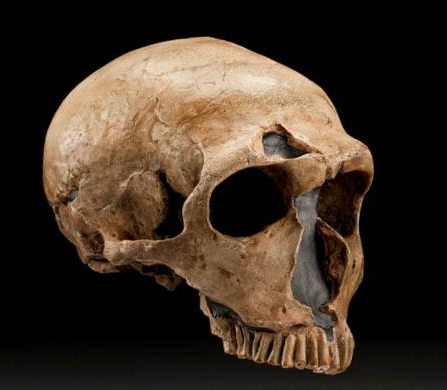Large eyes may have contributed to Neanderthals' extinction

A recent study offers new insight into the differences in brain organization between Neanderthals and modern-day humans. The research suggests that Neanderthals may have become extinct due to their large eyes. The larger eyes resulted in more of their brain activity being devoted to seeing in the dark. This, unfortunately, came at the expense of higher-level functioning.
The study, published in Proceedings of the Royal Society B, found that even though the brains of Neanderthals and anatomically modern humans (AMHs) are the same size, Neanderthals had much bigger visual systems as indicated by the orbital volume of the eyes. Skulls of 32 Homo sapiens and 13 Neanderthals were compared by Eiluned Pearce at Oxford University. She found that the eye sockets of Neanderthals were larger by 6mm, on average, than the sockets of Homo sapiens. This feature, combined with their larger body, mass meant fewer intellectual resources to allocate to other needs.
According to reports by BBC, the ancestor of Neanderthals that left Africa had to adapt to the reduced light in Europe due to longer and darker nights and less sunlight during the day. Those that stayed in Africa, however, were still exposed to more sunshine and longer days. They had no need to develop larger eyes, and instead, developed more evolved frontal lobes enabling them to engage in higher-level thinking. This allowed them to survive when the Neanderthal could not, and they eventually spread across the globe.
Here are some other fun facts about Neanderthals from the Smithsonian Museum of Natural History.
- The 'th' is actually pronounced as 't' in the word Neanderthal.
- The slouched stance that many of us associate with Neanderthals is incorrect. The first nearly complete Neanderthal skeleton that was reconstructed led to this misconception. The Neanderthal suffered from a degenerative joint disease and had a curved spine, partly contributing to the stooped stance. It also seems that the scientist who reconstructed it, Pierre Marcellin Boule, had preconceived notions about Neanderthals and constructed the skeleton to purposely have a stooped posture. The skeleton is known as "the old man of La Chapelle."
- DNA has been extracted from more than a dozen Neanderthal fossils to be used in the Neanderthal Genome Project.
Photo courtesy of the Smithsonian Institute.
0 comments